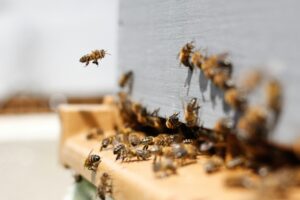
Not All Safaris Are Created Equally
Some chase the “Big 5” at high speed, crowding animals and jostling for a photo. Ours… don’t. You embark on a safari thinking you’re going because
When people dream of going on safari, they often picture lions, elephants, or graceful giraffes. But those who’ve truly experienced Africa’s wild heart know that some of the most enchanting animals are the ones that don’t always make the spotlight. Enter the waterbuck—a large, rugged antelope with a love for wetlands, with a heart-shaped nose and a rather unforgettable behind.
Native to sub-Saharan Africa, the waterbuck (Kobus ellipsiprymnus) is a hefty, shaggy-coated antelope you’re likely to spot near rivers, marshes, and lake edges. Adult males can weigh up to 600 pounds and sport long, elegant spiral horns that curve backward and up. Females are smaller and hornless but just as striking.
One of their most distinctive features? A bold white ring around their rump, often joked about as a “target” by safari guides. But in truth, this marking helps herd members stick together in tall grass or dense brush—nature’s version of high-visibility gear.
Waterbucks aren’t just fond of water—they depend on it. Unlike some antelopes that can survive in dry plains, waterbucks need to drink regularly and stick close to wet areas with rich, green grass. This makes them relatively easy to find—especially if you’re near a river at dawn or dusk.
If danger approaches, they’ll often flee into the water, where their oily, water-resistant coats help them swim to safety. Nile crocodiles may pose a risk, but many predators like lions hesitate to follow them into the drink.

While they may not be the flashiest animal on safari, waterbucks are an important part of the ecosystem. Their grazing helps shape the landscape, and they serve as prey for lions, leopards, hyenas, and crocodiles.
Territorial males defend prime riverfront “real estate” to attract females, often engaging in intense but mostly ritualized horn duels. Females tend to gather in small herds with their young, and newborn calves are carefully hidden in tall grass until they’re strong enough to keep up.
Share:

Some chase the “Big 5” at high speed, crowding animals and jostling for a photo. Ours… don’t. You embark on a safari thinking you’re going because

When people dream of going on safari, they often picture lions, elephants, or graceful giraffes. But those who’ve truly experienced Africa’s wild heart know that

Tanzania, renowned for its unparalleled wildlife and natural landscapes, has long been at the forefront of conservation efforts. As human populations expand and encroach on

Wanderful Tanzania is an African Safari Tour Company partnership powered by Periquito Adventures & Travel in the USA.
© Copyright | Wanderful Tanzania | All Rights Reserved | Powered by Periquito Adventures & Travel